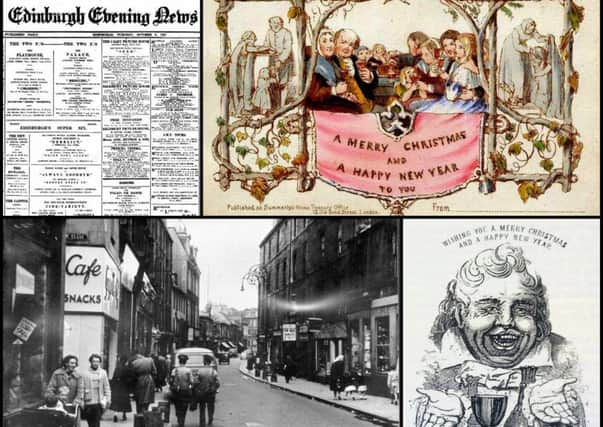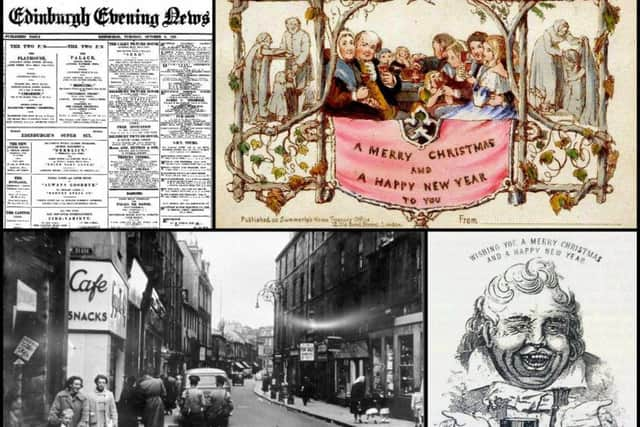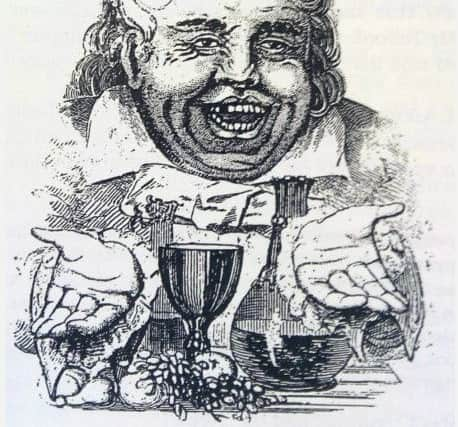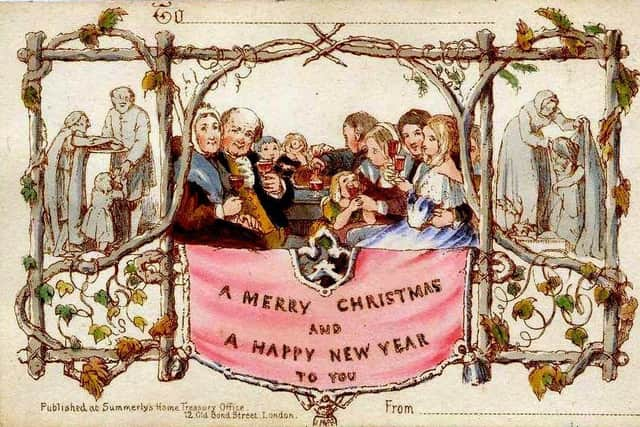Can the Christmas card trace its origins back to Leith?


The time honoured tradition of sending cards to one another at Christmas, while on the decline among the younger generation, continues to keep the stamp trade ticking over during the month of December.
Officially, they’ve been on the go since 1843, when Sir Henry Cole, of Penny Post fame, commissioned London artist John Callcott Horsley to create what is now accepted to be the world’s first commercially-produced Christmas card.
Advertisement
Hide AdAdvertisement
Hide AdThe colouful, single-sided card depicts a large group of family and friends raising a toast to one another with illustrations of charitable acts on either side.


Seen as encouraging families - children included - to drink alcohol, the card attracted criticism when it was initially published, but is now regarded as the first of its kind - according to the world’s encyclopaedias anyway.
But that might not be strictly true. There is a Scottish claim to the Christmas card crown and it dates back two years earlier.
Leith’s claim to the Christmas card


In 1841, Leith printer and publisher Charles Drummond sold a festive greeting card from his shop in the Kirkgate. The design was attributed to his friend, Thomas Sturrock and it was fixed on to a copper plate by Edinburgh engraver Alexander Aikman.
Advertisement
Hide AdAdvertisement
Hide AdScotland at this time was more concerned with the celebration of New Year than it was Christmas, reflected by the card’s inscription: “A Guid New Year, An’ Mony O’ Them”.
Drummond’s card was described in a letter published by the Edinburgh Evening News more than 90 years later in 1934. Part of the letter, which was penned in 1907, read: “The card showed the curly head of a boy, open-mouthed (minus a tooth in the upper row) with fat, chubby cheeks, merry twinkling eyes and an expression of such hearty laughter that the happy combination, by the natural infectious process, produced the desired result on the onlooker, who was greeted with the wish of ‘many happy years’”.


A response to the letter was published a few days later. It was from Thomas Sturrock’s grandson, Douglas L. Sturrock, and explained that a copy of the card had been displayed on the walls of Leith Town Hall for decades until it was returned to the Sturrocks in 1920 following the amalgamation of Leith and Edinburgh.
Then, in 1946, more than a century after it was first produced, the Evening Dispatch reported that the original plates had been discovered by a scrap metal collector.
Advertisement
Hide AdAdvertisement
Hide AdThe plates were badly corroded but featured the happy, cherubic face with missing tooth that had been described years before.
Even more incredibly, it was revealed that one of the plates bore the greeting “Wishing You A Merry Christmas And A Happy New Year”, evidence that, at some point, Drummond and Sturrock decided to adapt their card for the Christmas market.


Exactly what became of the card or how many Drummond sold is unknown, but according to the Scottish Printing Archival Trust, it did have a major impact.
“The first distinctive Christmas card was produced in London two years later, and with the Victorian emphasis on Christmas, it became one of the great annual festivals. It also brought a revival of popularity in Edinburgh after its relative obscurity following the Reformation in the 16th century.”
Advertisement
Hide AdAdvertisement
Hide AdWhile the old port’s ownership of the ubiquitous Crimbo card may continue to be omitted from the annals of history for a while yet, there does appear to be sufficient evidence to stake a convincing claim.
